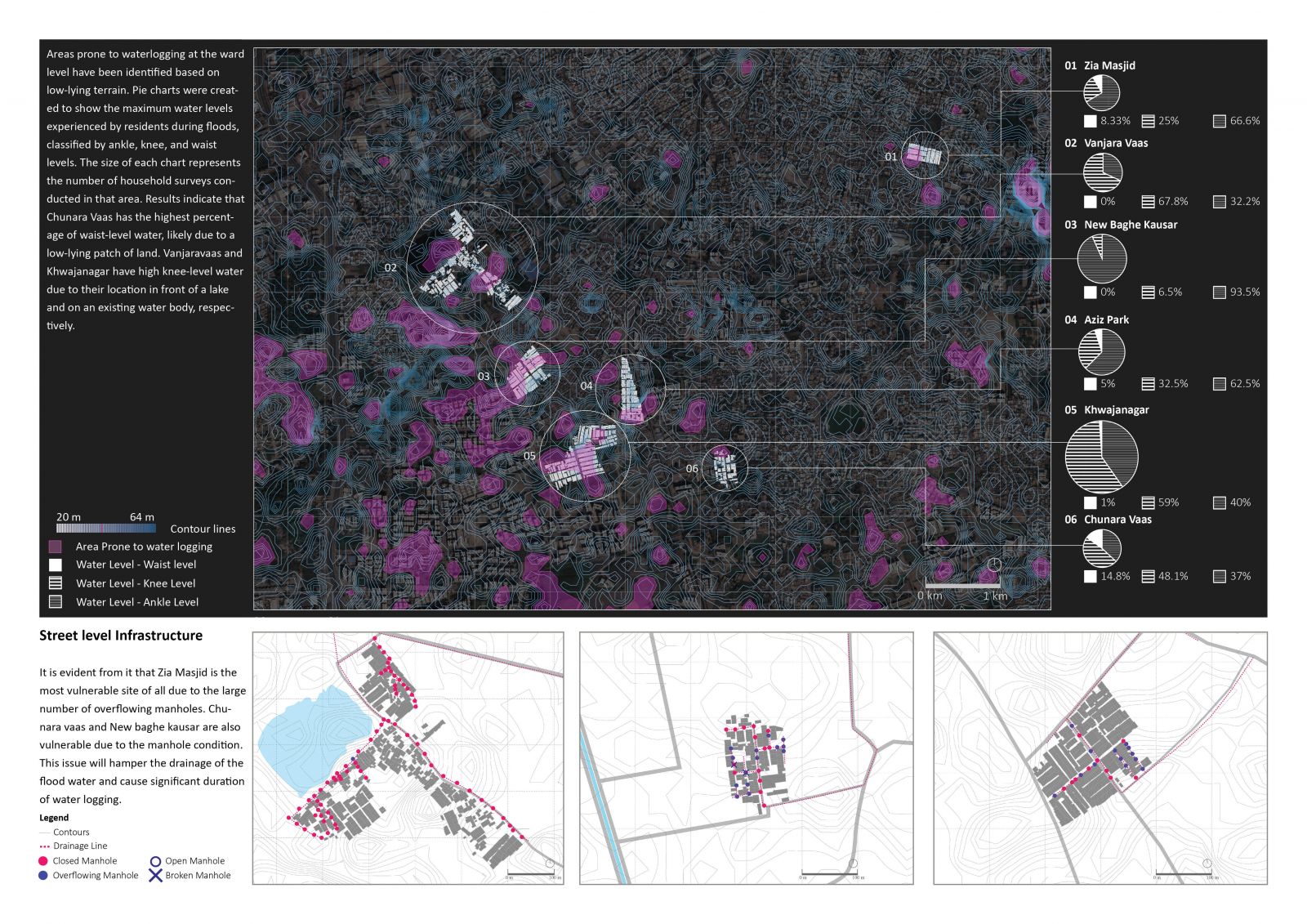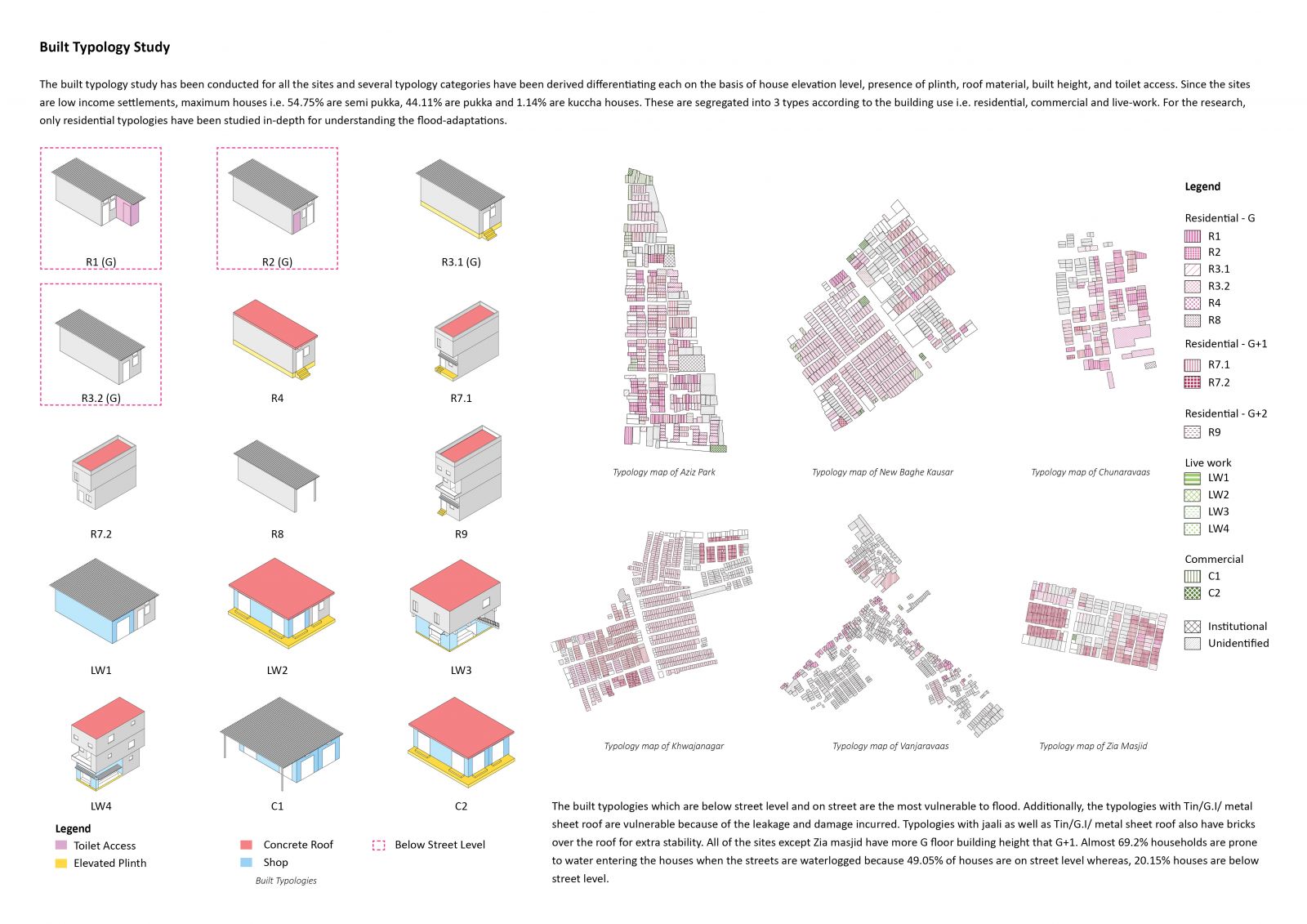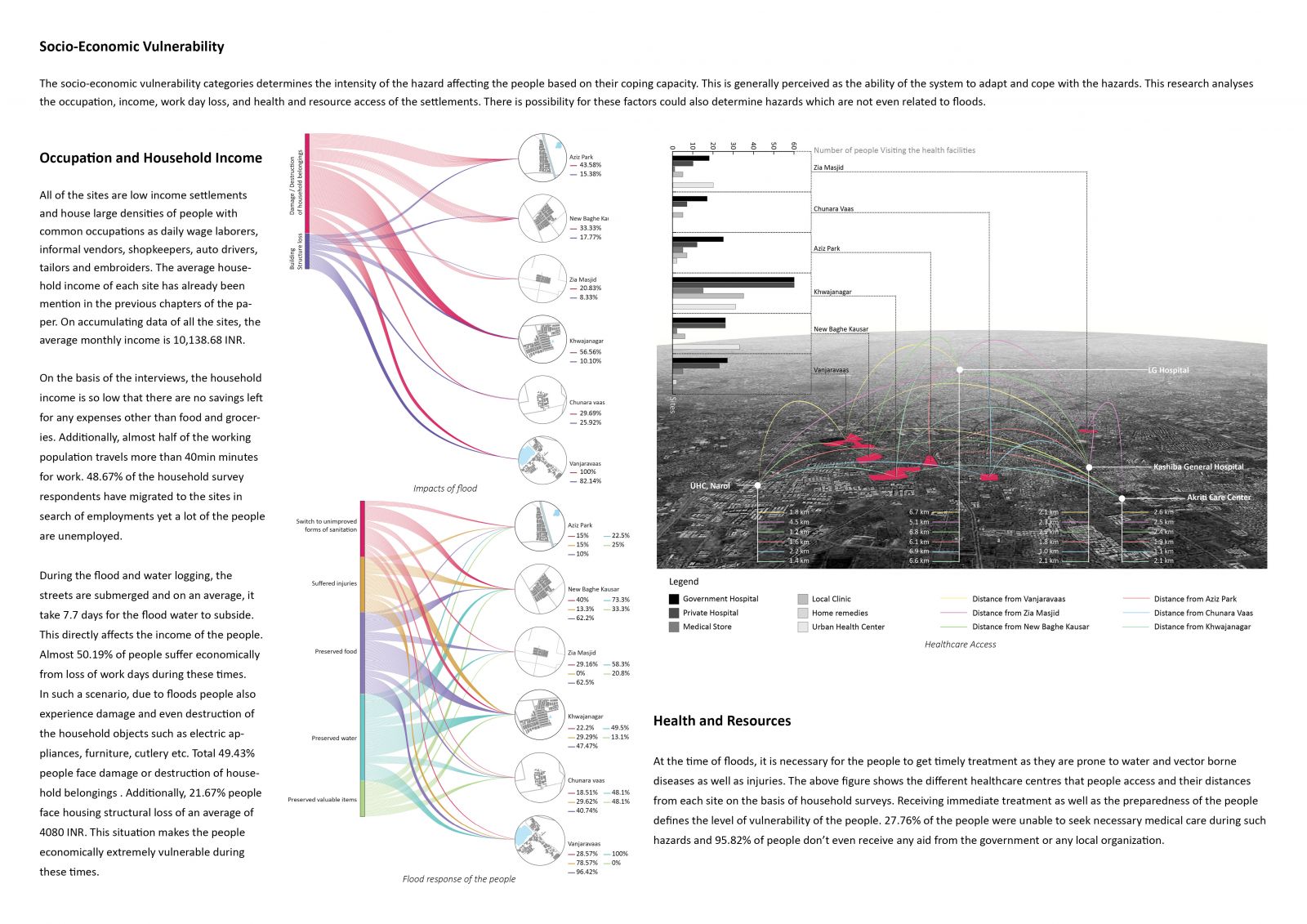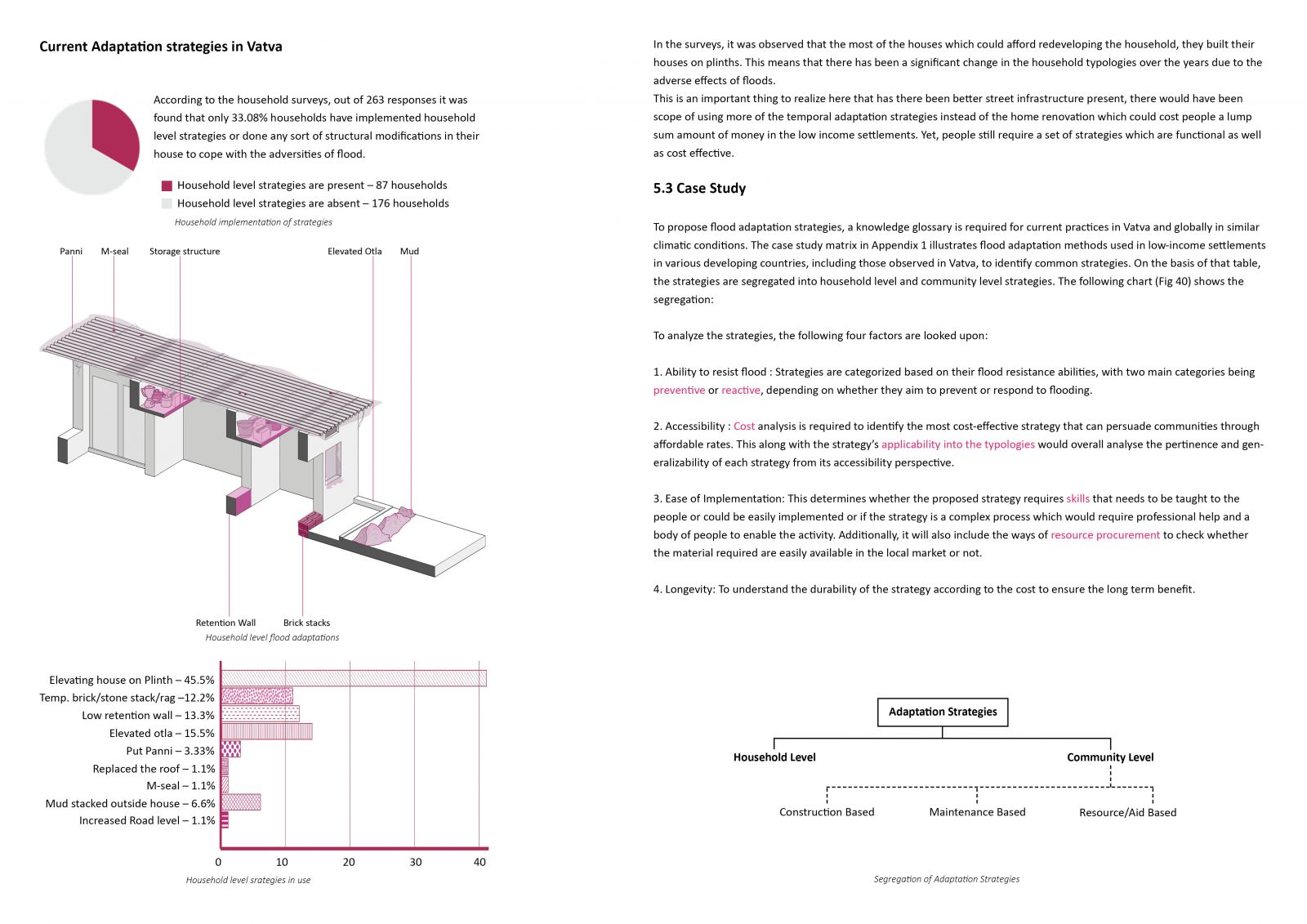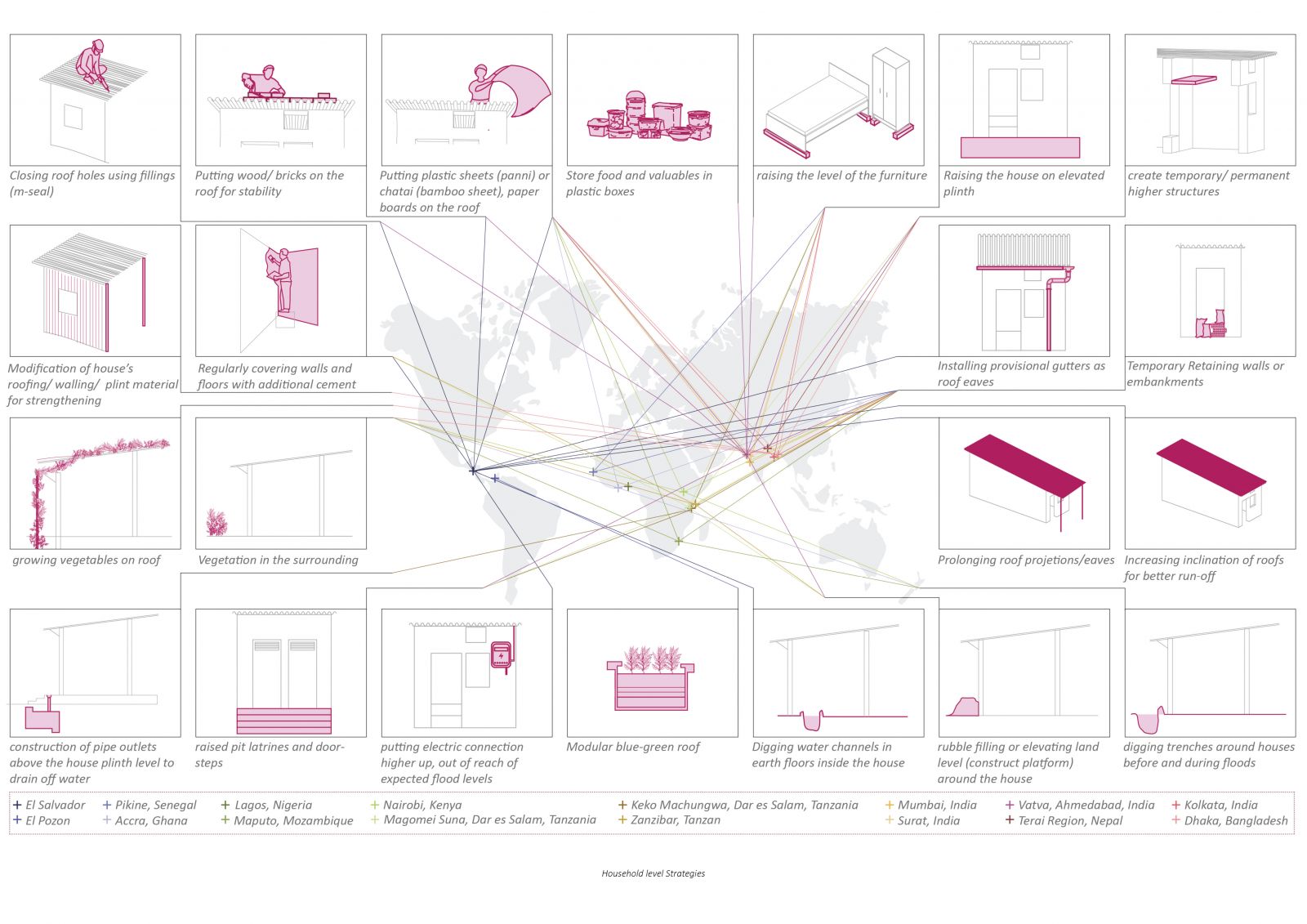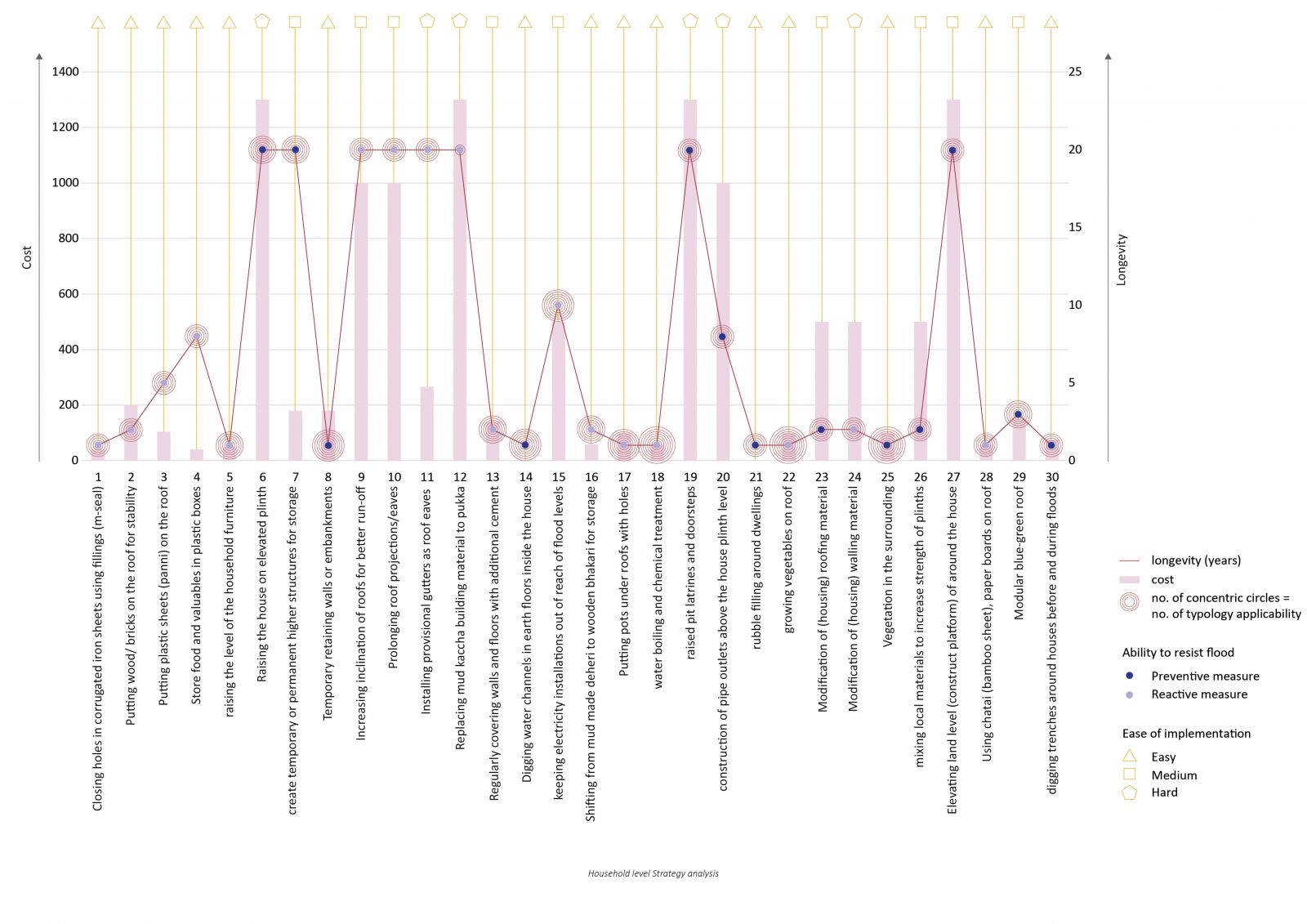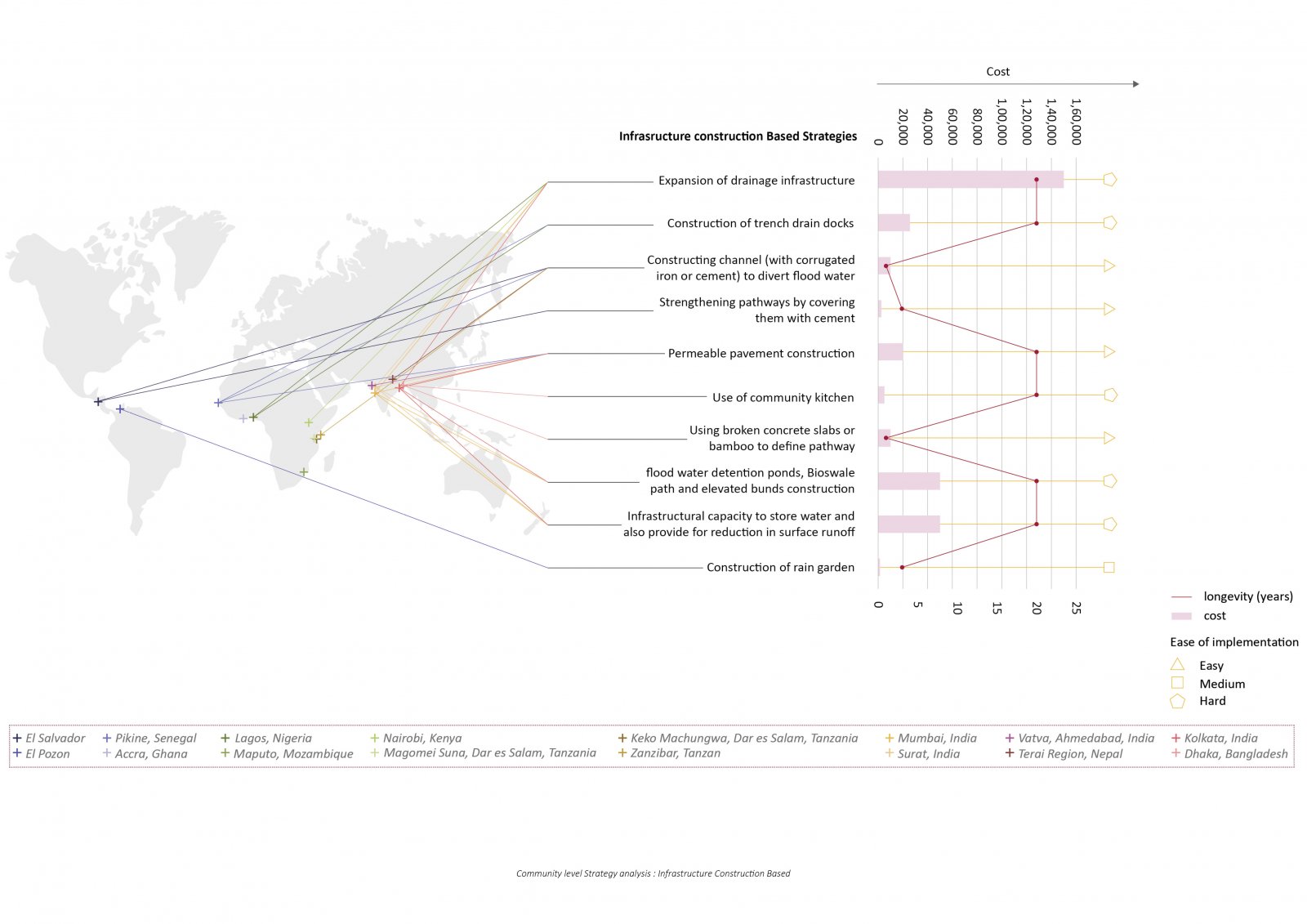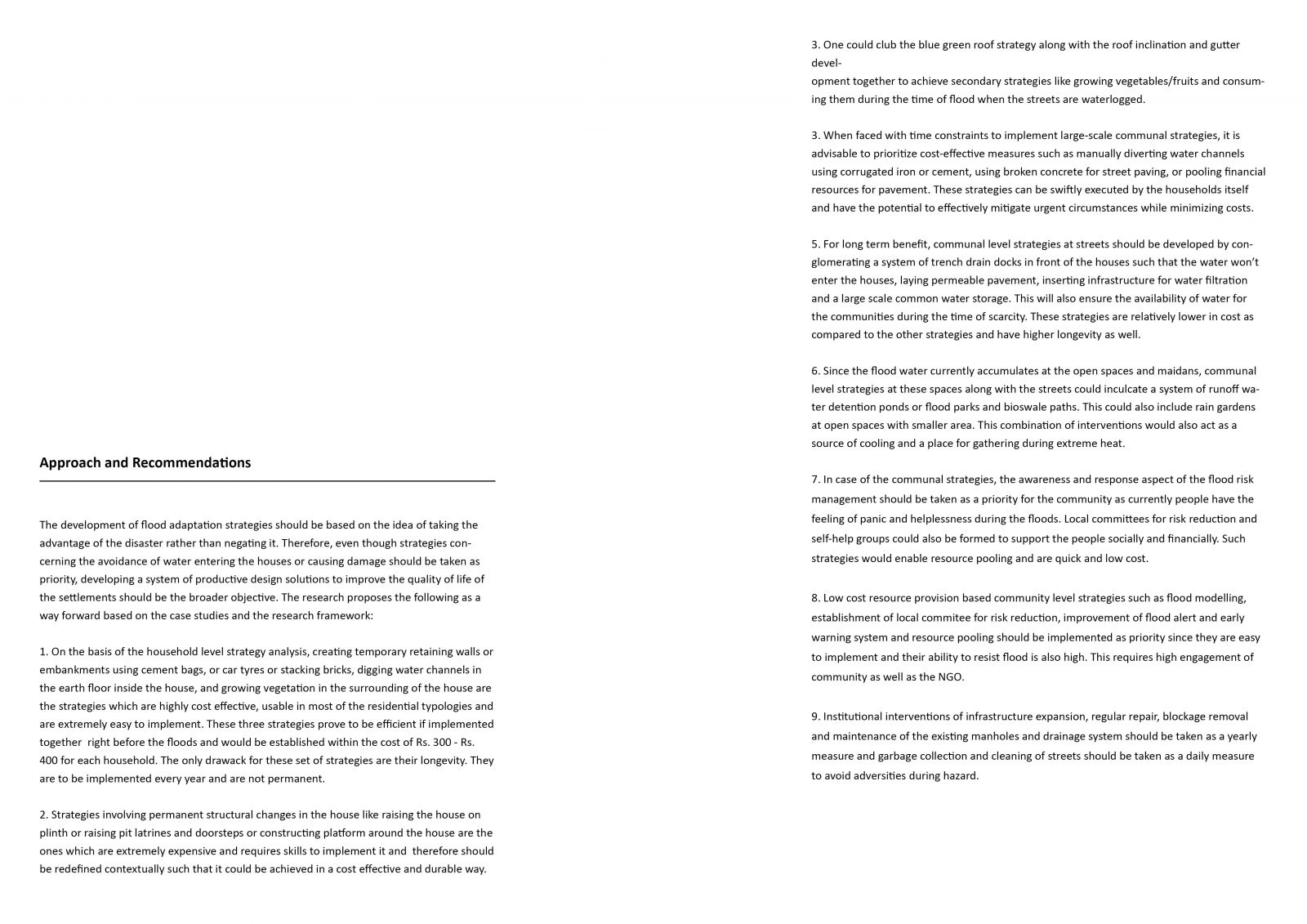Your browser is out-of-date!
For a richer surfing experience on our website, please update your browser. Update my browser now!
For a richer surfing experience on our website, please update your browser. Update my browser now!
The process of urbanization has created risks in relation to climatic variability, direct and indirect effects of climate change, as well as hazards. It is crucial to distinguish between these risks at a global level, but locally, responses to all environmental hazards and risks should be integrated. In case of Ahmedabad, a rapidly urbanizing city in India, four major climate change stressors namely; heat, water scarcity, flooding and water and vector borne diseases have been identified. People living in low-income settlements, especially in densely populated urban areas, are among the most vulnerable to the effects these stressors. This is an applied research which aims to investigate the existing flood adaptations in the low income settlements of Vatva, Ahmedabad; with the focus on understanding and evaluating the current practices and identifying the needs and gaps in the present scenario. A multistage sampling would be involved to zoom into the different levels of data collection, analysis and decision making. A total of six low income settlements would be studied so as to attain diverse perspectives to create a comparative study on the impacts of climate change. Semi structured interviews were conducted to determine that the specific climate stressor impacting widely in all the settlements is floods. Integrated assessment of both physical vulnerability as well as the socio-economic vulnerability is done to determine the most vulnerable groups and households. Household surveys were conducted to understand the overall dynamics of living conditions, the climate-related risks, the existing adaptation techniques to flood, and the coping mechanisms of the people. Furthermore, literature review and case studies are done to contextualize climate change, climate variability and the adaptation strategies used to cope with the floods globally. Based on the findings, this paper recommends suggestions on household level and communal adaptation strategies against floods for the settlements.
View Additional Work

